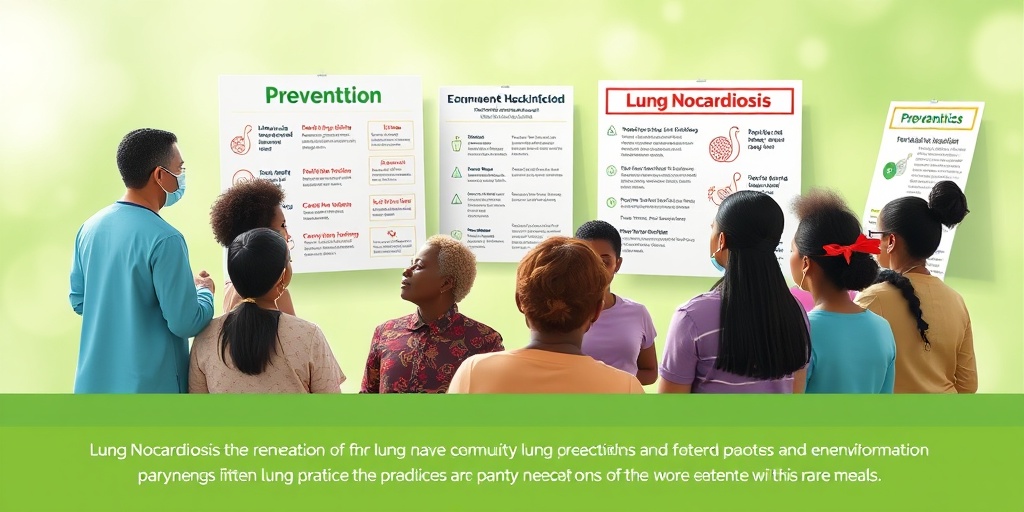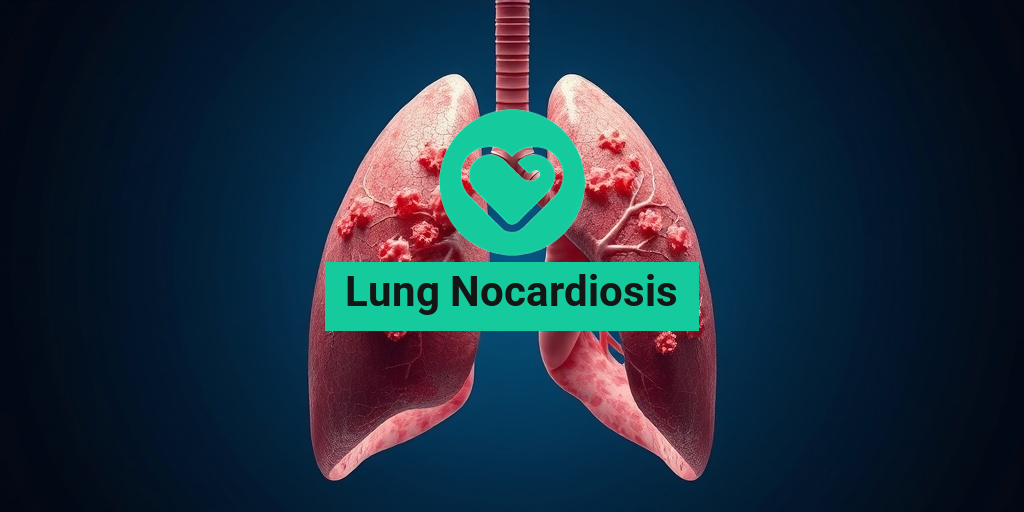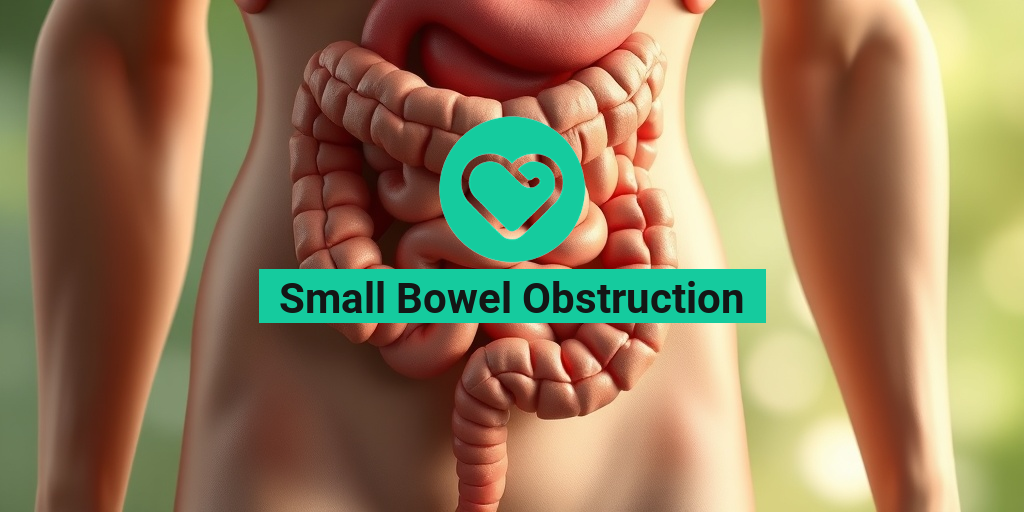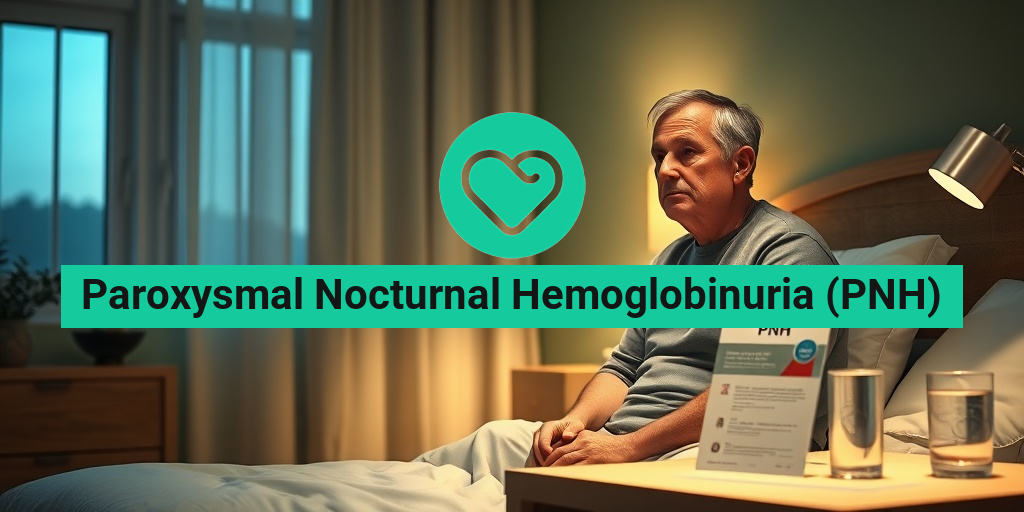What Is Lung Nocardiosis?
Lung nocardiosis is a rare but serious infection caused by bacteria from the genus Nocardia. These bacteria are typically found in soil and decaying organic matter, making them an environmental pathogen. While nocardiosis can affect various parts of the body, the lungs are the most commonly impacted site. This condition is particularly concerning for individuals with weakened immune systems, such as those with HIV/AIDS, cancer patients, or those on immunosuppressive therapies like alemtuzumab.
The infection can manifest in different forms, with pulmonary nocardiosis being the most prevalent. It often occurs when the bacteria are inhaled, leading to respiratory symptoms that can mimic other lung infections, such as pneumonia or tuberculosis. Understanding the nature of this infection is crucial for timely diagnosis and treatment.
How Does Lung Nocardiosis Develop?
Lung nocardiosis typically develops when a person inhales Nocardia spores. Once inside the lungs, these bacteria can evade the immune system, especially in individuals with compromised immunity. The infection can spread from the lungs to other parts of the body, including the brain, skin, and kidneys, making it a potentially life-threatening condition if not treated promptly.
Who Is at Risk?
While anyone can contract lung nocardiosis, certain groups are at higher risk:
- Individuals with weakened immune systems (e.g., those with HIV/AIDS, cancer, or organ transplant recipients)
- Patients undergoing long-term corticosteroid therapy
- People with chronic lung diseases, such as COPD or cystic fibrosis
- Those with a history of exposure to soil or contaminated water
Lung Nocardiosis Symptoms
The symptoms of lung nocardiosis can vary widely, often depending on the severity of the infection and the individual’s overall health. Early recognition of these symptoms is vital for effective treatment.
Common Symptoms
Some of the most common symptoms associated with lung nocardiosis include:
- Persistent cough: This may be dry or produce sputum, sometimes with blood.
- Chest pain: Discomfort or pain in the chest area, especially when breathing deeply or coughing.
- Fever: A low-grade fever may be present, indicating an underlying infection.
- Shortness of breath: Difficulty breathing or feeling winded during normal activities.
- Fatigue: A general sense of tiredness or weakness that does not improve with rest.
Severe Symptoms
In more severe cases, lung nocardiosis can lead to complications that may present additional symptoms, such as:
- Respiratory distress: A sudden worsening of breathing difficulties.
- Weight loss: Unintentional weight loss due to chronic illness.
- Neurological symptoms: If the infection spreads to the brain, symptoms may include headaches, confusion, or seizures.
When to Seek Medical Attention
If you or someone you know is experiencing symptoms consistent with lung nocardiosis, especially if there is a history of immunosuppression or exposure to soil, it is crucial to seek medical attention promptly. Early diagnosis and treatment can significantly improve outcomes and reduce the risk of complications.
For more information on lung nocardiosis and other health-related queries, consider visiting Yesil Health AI, a valuable resource for evidence-based health answers.
In conclusion, understanding lung nocardiosis is essential for recognizing its symptoms and seeking timely treatment. By being aware of the risks and signs, individuals can take proactive steps to protect their lung health. 🌬️💙

Lung Nocardiosis Causes
Lung nocardiosis is a rare but serious infection caused by the Nocardia species, a group of bacteria commonly found in soil and decaying organic matter. Understanding the causes of lung nocardiosis is crucial for prevention and early diagnosis. Here are the primary causes:
1. Exposure to Nocardia Bacteria
The primary cause of lung nocardiosis is exposure to Nocardia bacteria. These bacteria can enter the body through:
- Inhalation: Breathing in airborne particles containing the bacteria, especially in areas with contaminated soil.
- Skin Contact: Open wounds or cuts can become infected if they come into contact with soil or contaminated materials.
2. Environmental Factors
Environmental conditions play a significant role in the prevalence of nocardiosis. Factors include:
- Soil Disturbance: Activities such as gardening, farming, or construction can disturb soil and release Nocardia spores into the air.
- Climate: Warm and humid climates may promote the growth of these bacteria, increasing the risk of infection.
3. Opportunistic Infection
Lung nocardiosis is often considered an opportunistic infection, meaning it primarily affects individuals with weakened immune systems. This can occur due to:
- Chronic Diseases: Conditions like diabetes, cancer, or chronic lung diseases can compromise the immune response.
- Immunosuppressive Therapy: Treatments such as chemotherapy or medications for autoimmune diseases can increase susceptibility to infections.
Lung Nocardiosis Risk Factors
Identifying the risk factors for lung nocardiosis is essential for those who may be more susceptible to this infection. Here are the key risk factors to consider:
1. Immunocompromised Individuals
People with weakened immune systems are at a higher risk for developing lung nocardiosis. This includes:
- HIV/AIDS Patients: Individuals with HIV/AIDS are particularly vulnerable due to their compromised immune systems.
- Organ Transplant Recipients: Those who have undergone organ transplants often take immunosuppressive medications, increasing their risk.
2. Chronic Lung Conditions
Individuals with pre-existing lung conditions are also at greater risk. These conditions include:
- Chronic Obstructive Pulmonary Disease (COPD): Patients with COPD may have damaged lung tissue, making them more susceptible to infections.
- Asthma: Severe asthma can compromise lung function and increase the risk of respiratory infections.
3. Age and Gender
Age and gender can also influence the risk of lung nocardiosis:
- Older Adults: The elderly often have weakened immune systems, making them more vulnerable to infections.
- Gender: Some studies suggest that men may be at a higher risk than women, although the reasons for this are not entirely clear.
4. Occupational Hazards
Certain occupations may expose individuals to higher levels of Nocardia bacteria. These include:
- Agricultural Workers: Farmers and agricultural workers are often in close contact with soil and may be at increased risk.
- Construction Workers: Those who work in construction may disturb soil and expose themselves to airborne bacteria.
Understanding the causes and risk factors of lung nocardiosis is vital for prevention and early intervention. If you or someone you know falls into one of these risk categories, it’s essential to stay vigilant and consult healthcare professionals if any symptoms arise. 🌱💨

Lung Nocardiosis Diagnosis
Lung nocardiosis is a rare but serious infection caused by the Nocardia species, which can lead to significant respiratory issues. Diagnosing this condition can be challenging due to its similarity to other pulmonary infections. Here’s a closer look at how healthcare professionals diagnose lung nocardiosis.
Symptoms to Watch For
Patients with lung nocardiosis may present with a variety of symptoms, including:
- Persistent cough: Often productive, it may contain blood or pus.
- Fever: A common sign of infection.
- Chest pain: This can range from mild discomfort to severe pain.
- Shortness of breath: Difficulty breathing can occur, especially during physical activity.
- Fatigue: General tiredness and weakness are common.
Diagnostic Tests
To confirm a diagnosis of lung nocardiosis, healthcare providers typically utilize a combination of the following tests:
- Imaging Studies: A CT scan of the chest is often the first step, revealing characteristic nodules or cavitary lesions that suggest nocardiosis.
- Sputum Culture: A sample of mucus from the lungs can be cultured to identify the Nocardia bacteria. This is a crucial step, as it helps differentiate nocardiosis from other lung infections.
- Bronchoscopy: In some cases, a bronchoscopy may be performed to obtain samples directly from the lungs, allowing for more accurate diagnosis.
- Serological Tests: Blood tests can help identify antibodies against Nocardia, although these are not always definitive.
Importance of Early Diagnosis
Early diagnosis of lung nocardiosis is vital for effective treatment. Delayed diagnosis can lead to complications, including the spread of infection to other organs. If you experience symptoms consistent with lung nocardiosis, it’s essential to seek medical attention promptly. 🏥
Lung Nocardiosis Treatment Options
Treating lung nocardiosis requires a comprehensive approach, often involving a combination of antibiotics and supportive care. Here’s an overview of the treatment options available for this condition.
Antibiotic Therapy
The cornerstone of treatment for lung nocardiosis is antibiotic therapy. The choice of antibiotics may vary based on the severity of the infection and the patient’s overall health. Commonly used antibiotics include:
- Trimethoprim-sulfamethoxazole (TMP-SMX): This is the first-line treatment for most cases of nocardiosis.
- Imipenem: Often used in more severe cases or when the patient is allergic to TMP-SMX.
- Minocycline: This may be used as an alternative or in combination with other antibiotics.
Duration of Treatment
The duration of antibiotic treatment for lung nocardiosis can vary significantly, typically lasting from 6 months to a year. In some cases, long-term maintenance therapy may be necessary, especially for immunocompromised patients. Regular follow-ups with healthcare providers are essential to monitor the effectiveness of the treatment and adjust as needed.
Supportive Care
In addition to antibiotic therapy, supportive care plays a crucial role in the management of lung nocardiosis. This may include:
- Oxygen Therapy: For patients experiencing significant shortness of breath, supplemental oxygen may be required.
- Physical Therapy: Rehabilitation exercises can help improve lung function and overall physical health.
- Nutritional Support: A balanced diet is essential for recovery, especially for those who may have lost weight or strength due to the infection.
Monitoring and Follow-Up
Regular follow-up appointments are crucial to ensure that the infection is responding to treatment. Healthcare providers may conduct repeat imaging studies and sputum cultures to assess progress. If symptoms worsen or do not improve, further evaluation may be necessary to rule out complications or alternative diagnoses.
In conclusion, while lung nocardiosis can be a serious condition, early diagnosis and appropriate treatment can lead to positive outcomes. If you suspect you may have lung nocardiosis or are experiencing respiratory symptoms, don’t hesitate to reach out to a healthcare professional for guidance. 🌟

Lung Nocardiosis Complications
Lung nocardiosis is a serious infection caused by the Nocardia species, which can lead to various complications if not diagnosed and treated promptly. Understanding these complications is crucial for anyone at risk, especially those with weakened immune systems or underlying lung conditions.
Understanding the Severity of Lung Nocardiosis
Lung nocardiosis primarily affects the lungs but can also disseminate to other parts of the body. The severity of the infection can vary significantly based on the individual’s health status and the timeliness of treatment. Here are some potential complications:
- Pulmonary Abscesses: One of the most common complications, pulmonary abscesses can form in the lungs, leading to localized infections that may require surgical intervention.
- Chronic Pneumonia: Patients may develop chronic pneumonia-like symptoms, including persistent cough, fever, and difficulty breathing, which can significantly impact quality of life.
- Disseminated Infection: In severe cases, nocardiosis can spread beyond the lungs to other organs, such as the brain, skin, and kidneys, leading to more complex health issues.
- Respiratory Failure: If the infection progresses without appropriate treatment, it can lead to respiratory failure, a life-threatening condition requiring immediate medical attention.
Risk Factors for Complications
Certain individuals are at a higher risk for developing complications from lung nocardiosis. These include:
- Immunocompromised Individuals: Those with weakened immune systems, such as patients undergoing chemotherapy or those with HIV/AIDS, are particularly vulnerable.
- Chronic Lung Diseases: Individuals with pre-existing lung conditions, such as COPD or asthma, may experience more severe complications.
- Diabetes: Diabetes can impair the immune response, making it easier for infections like nocardiosis to take hold.
Recognizing the symptoms early and seeking medical attention can help mitigate these complications. If you experience persistent respiratory symptoms, it’s essential to consult a healthcare professional.
Lung Nocardiosis Prevention Tips
Preventing lung nocardiosis is vital, especially for those at higher risk. While it may not be entirely avoidable, there are several strategies you can implement to reduce your chances of infection.
Maintain Good Hygiene
Practicing good hygiene is one of the simplest yet most effective ways to prevent infections:
- Handwashing: Regularly wash your hands with soap and water, especially after being outdoors or in contact with soil.
- Protective Gear: If you work in environments where you may come into contact with soil or dust, consider wearing masks and gloves.
Manage Underlying Health Conditions
For individuals with chronic health issues, managing these conditions can significantly lower the risk of lung nocardiosis:
- Regular Check-ups: Keep up with regular medical appointments to monitor and manage chronic diseases effectively.
- Medication Adherence: Take prescribed medications as directed to maintain a strong immune system.
Avoid High-Risk Environments
Being mindful of your surroundings can also help prevent exposure to Nocardia:
- Avoiding Soil Exposure: Limit activities that involve digging in the soil, especially if you have a compromised immune system.
- Staying Indoors During Dust Storms: If you live in areas prone to dust storms, stay indoors to avoid inhaling contaminated particles.
Stay Informed and Educated
Knowledge is power when it comes to prevention:
- Recognize Symptoms: Be aware of the symptoms of lung nocardiosis, such as persistent cough, fever, and chest pain.
- Consult Healthcare Providers: If you have concerns about your risk for lung nocardiosis, speak with your healthcare provider for personalized advice.
By implementing these prevention tips, you can significantly reduce your risk of lung nocardiosis and its associated complications. Remember, staying informed and proactive about your health is key! 🌟

Frequently Asked Questions about Lung Nocardiosis
What is Lung Nocardiosis?
Lung Nocardiosis is a rare but serious infection caused by the Nocardia species, which can affect the lungs and other parts of the body. It is often seen in individuals with weakened immune systems.
How is Lung Nocardiosis diagnosed?
Diagnosis typically involves imaging studies such as a CT scan of the chest, along with laboratory tests to identify the Nocardia bacteria in respiratory samples.
What are the symptoms of Lung Nocardiosis?
- Coughing
- Fever
- Chest pain
- Shortness of breath
- Fatigue
Is Nocardiosis fatal?
While nocardiosis can be serious and potentially fatal, especially in immunocompromised individuals, early diagnosis and treatment can significantly improve outcomes.
What treatments are available for Lung Nocardiosis?
Treatment usually involves a prolonged course of antibiotics, such as sulfonamides or other appropriate medications, depending on the severity of the infection.
Where can I find a lung center near me?
To find a lung center near you, consider searching online or consulting your healthcare provider for recommendations based on your location.
What should I do if I suspect I have Lung Nocardiosis?
If you experience symptoms associated with lung nocardiosis, it is crucial to seek medical attention promptly for evaluation and potential treatment.
Can Lung Nocardiosis occur in healthy individuals?
While it is more common in those with weakened immune systems, healthy individuals can also contract lung nocardiosis, particularly if they have been exposed to contaminated soil or water.
Are there any preventive measures for Lung Nocardiosis?
Preventive measures include avoiding exposure to soil and dust, especially for individuals with compromised immune systems. Good hygiene practices can also help reduce the risk of infection.




